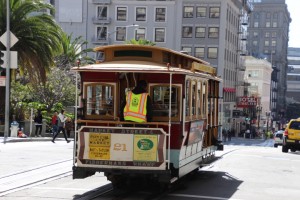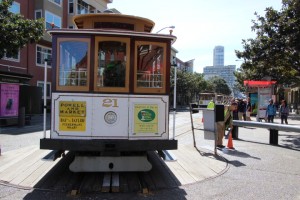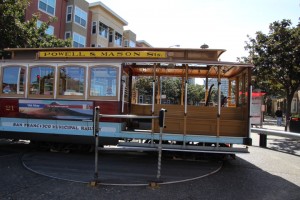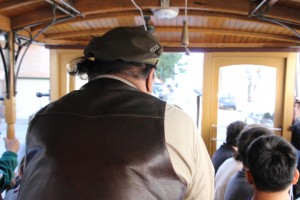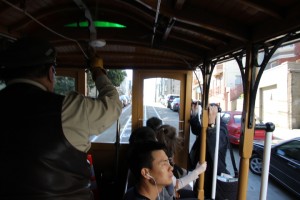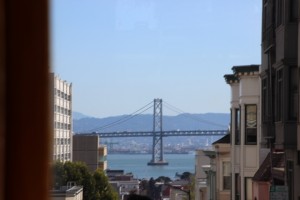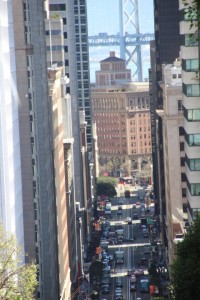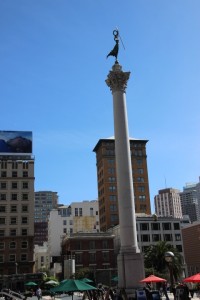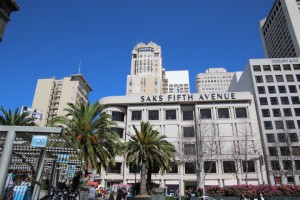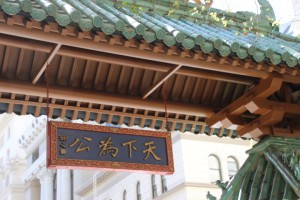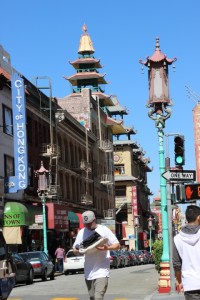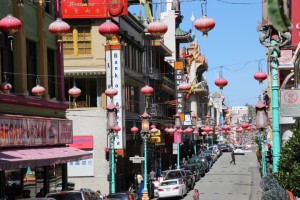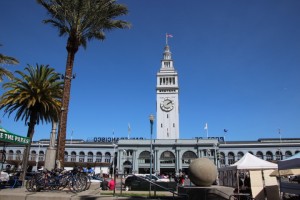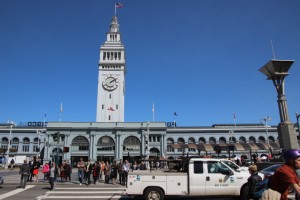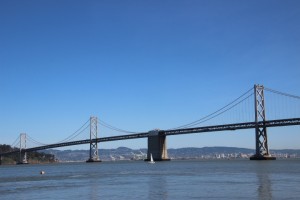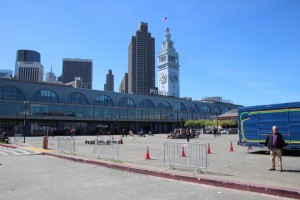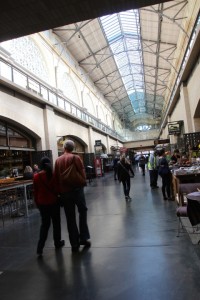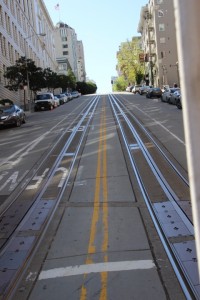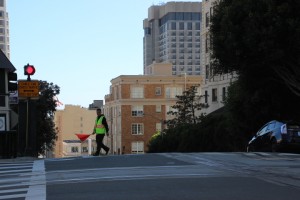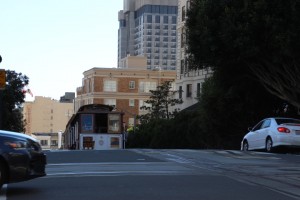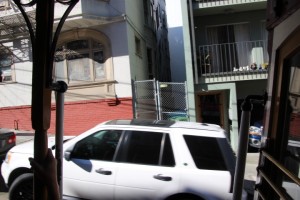Tuesday 15th March
We have just completed an exploration of the cable car network of the Downtown and Fisherman’s Wharf Districts. Essentially these are a tourist attraction but for some local people they are an easy way of getting up and down the steep hills of the city. Some of these hills are at least 1 in 4 and have stop sign protected crossroads at many of their crests. These cable cars were introduced in the late 19th century. The bodies are of timber construction, have brass fittings and are painted in different colours. Two routes, the Powell and Hyde and the Powell and Mason have a turnaround system whilst the Van Ness California route is operated without the turnaround. In 1947 a new mayor of the city announced that it was time for buses to take their place but the public fought back and the whole system was saved and became a National Historic Landmark in 1964. In the 1980s all parts of the system underwent a multi-million dollar overhaul.
Cable cars differ from tram cars in the way they are powered. The latter take electricity from overhead wires to power the electric motors and the rail lines are sunk into the road so that the wheel do not come off the tracks. Cable cars have this system for the wheels but beneath the car is a series of clamps which hold onto a continuous steel wire rope in the middle of the tracks. The wire is just visible in an open channel where cable cars operate on roads. These cables are 1.25 inches in diameter and are wound around an electric powered drum at the termini of the cable car lines so that the cars are pulled up and down the hills of the city. Driving the cars is a team effort. The conductor ensures that everyone is safe and monitors the operation of the car along the busy streets. The second person, known as the grip man, is towards the back of the car and operates the gripping levers and brakes. The grip is the clamping system and he ensures that the correct number of clamps are applied to the cable depending upon the terrain and direction of travel. He also operates the brakes of which there are 3. The wheel brakes are adhesion brakes and press against the wheels; track brakes press against the track when the grip man pulls a lever; while the emergency brake is a steel wedge that can be forced into the slot in the road where the wheels go. The two people communicate by bell which is used as sa warning to vehicles and pedestrians and also to indicate that the car is going to start, stop or go around a corner. The turntables are manually operated and prepare the car for its return trip.
We took lunch in China Town which is essentially a town in southern China applied to an American city. It is entered through a triple pagoda gateway which was a gift from Taiwan in 1970. Chinese immigrants began to arrive in San Francisco with the mid 19th century gold rush. It was their intention to get rich quick and return home but politically things things turned difficult at home so the majority of the immigrants stayed in the USA. There were difficulties, including racism and the turning of China Town into a ghetto but things are considerably improved now.
At the end of Market Street is the waterfront and the ferry building that we have previously mentioned. It has undergone a 110 million dollars worth of restoration so that it is not only a ferry terminal but a market and eatery used by people at lunchtime from the nearby Financial District.
Returning to base.
